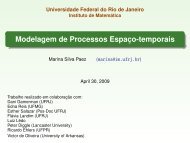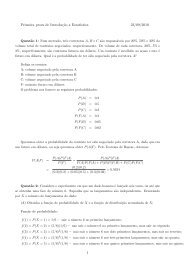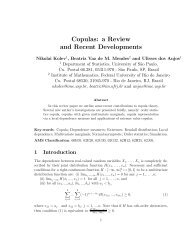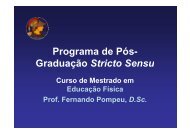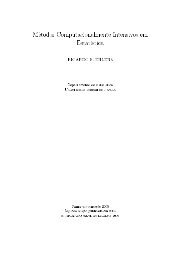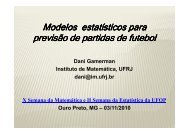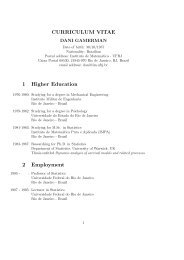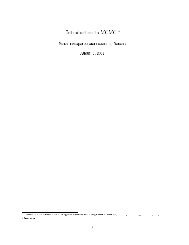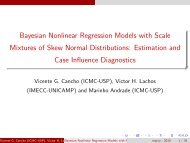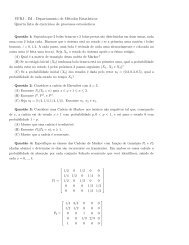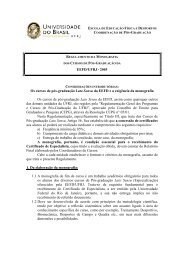Untitled - UFRJ
Untitled - UFRJ
Untitled - UFRJ
You also want an ePaper? Increase the reach of your titles
YUMPU automatically turns print PDFs into web optimized ePapers that Google loves.
Standard Setting for a Rasch Poisson Count ModelErnesto San MartínMeasurement Center MIDE UC & Department of Statistics, PontificiaUniversidad Católica, Santiago, ChileLuis Mauricio Castro CeperoDepartment of Statistics, Universidad de Concepción, Concepción, ChileAlejandro JaraDepartment of Statistics, Universidad de Concepción, Concepción, ChileRianne JanssenResearch Group Quantitative Psychology and Individual Differences &Centre for Educational Effectiveness and Evaluation, K. U. Leuven, BelgiumThe purpose of the paper is to look at the classification of the students in a Rasch Poisson countmodel on the basis of a standard-setting procedure. More specifically, we are interesting in the estimationof the number of student reaching the standard. The students are classified into two groups (master andnon-master students) by comparing their estimated abilities with the cut-off. However, in applicationsthere are almost inevitable concerns about the lack of robustness of resulting inferences with respect toassumed forms of the distributional component G (Verbeke and Lesaffre, 1996; Heagerty and Kurland,2001; Agresti et al, 2004). The question, therefore, is how the misspecification of the distribution of therandom-effects (individual abilities) affects on the classification of the students. To answer this question,we follow a Bayesian semi-parametric approach. It consists in estimating from the data the distributionG generating the individual abilities. Mixture of Dirichlet Process (MP) (Antoniak, 1974) and Mixtureof Polya Tree Process (MTP) (Lavine, 1992) have been used as nonparametric prior distributions for G.By doing so, the Bayesian nonparametric approach not only provides an estimation for G, but also acomparison between such an estimation and the parametric distribution. We compare the nonparametricalternative with the distribution typically assumed for the random-effects, namely a normal distribution.The conclusion of this study is that the misspecification of the distribution of the random effects has nota dramatic impact on the classification of the students. A theoretical justification will be provided.We will use the information provided by the estimation of G to make a second classification of thestudents. In fact, the methodology we develop in this paper uses individual abilities predicted from theestimation of G. We make comparisons between both classifications.Finally, the semi-parametric model we are using is an identified model in the sense that the fixedeffects and the distribution generating the random effects are identified by one observation provided tworepeated measures are at least available.Keywords: Cut-off, Minimally competent student, Rasch Poisson Count Model, Semi-parametricBayesian Inference.136



